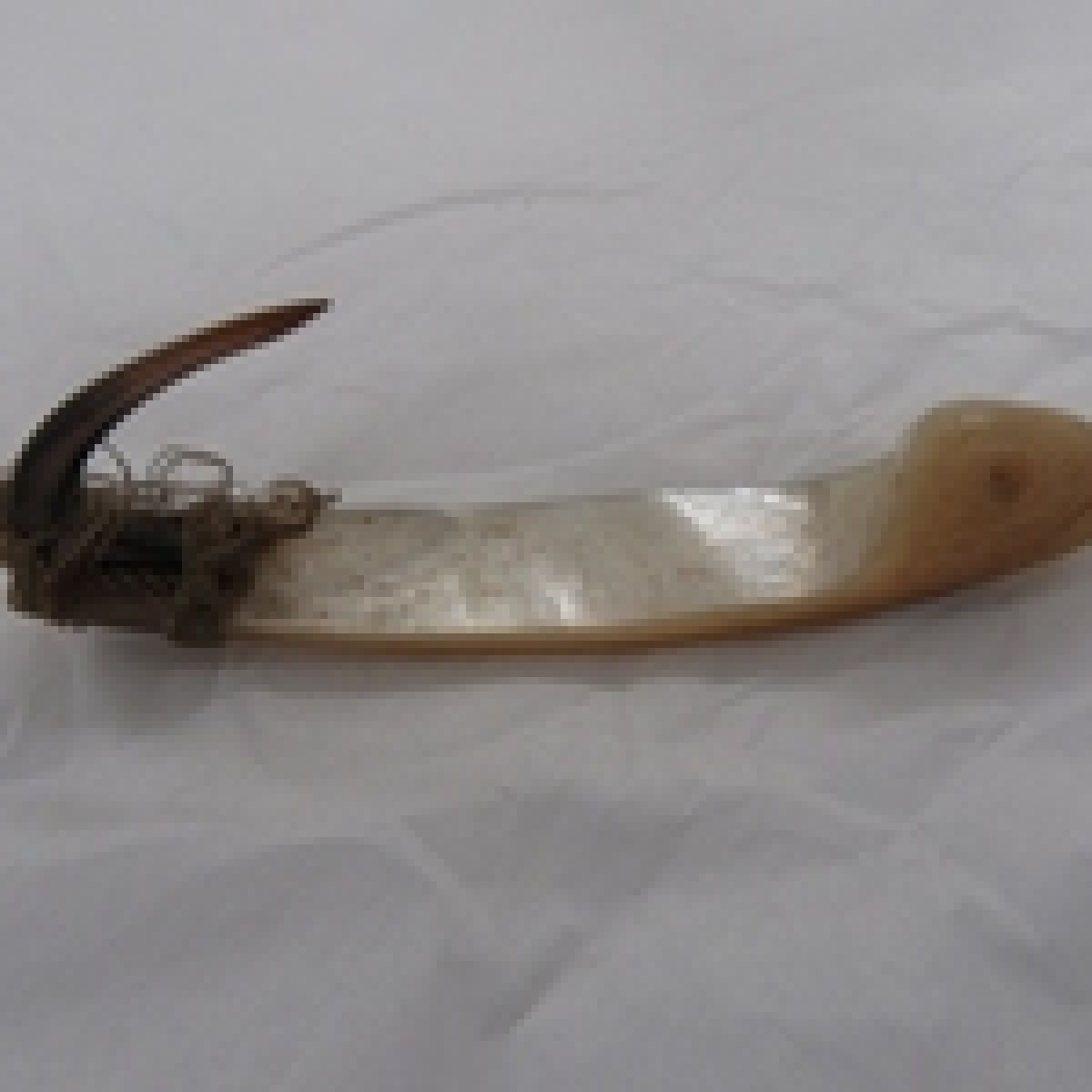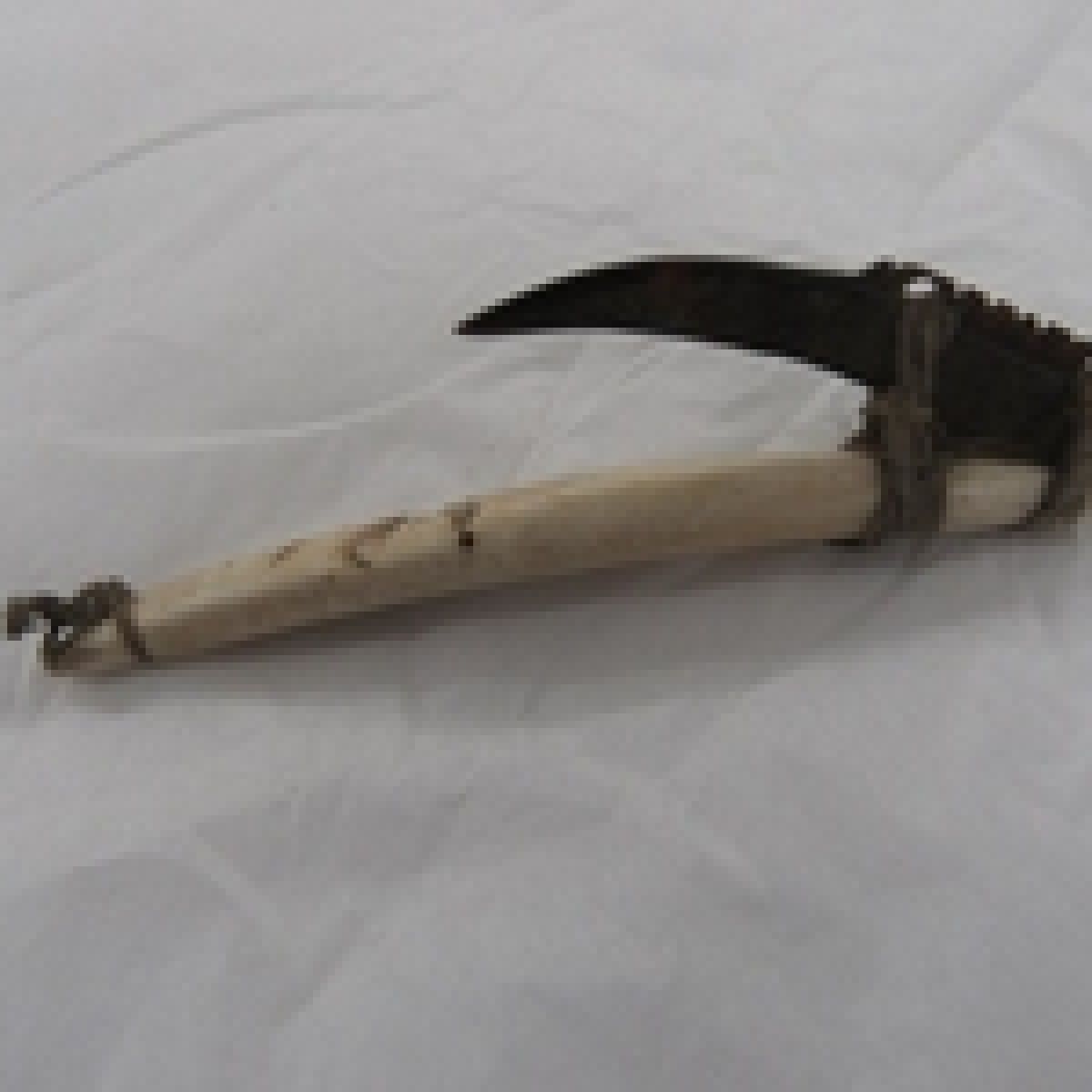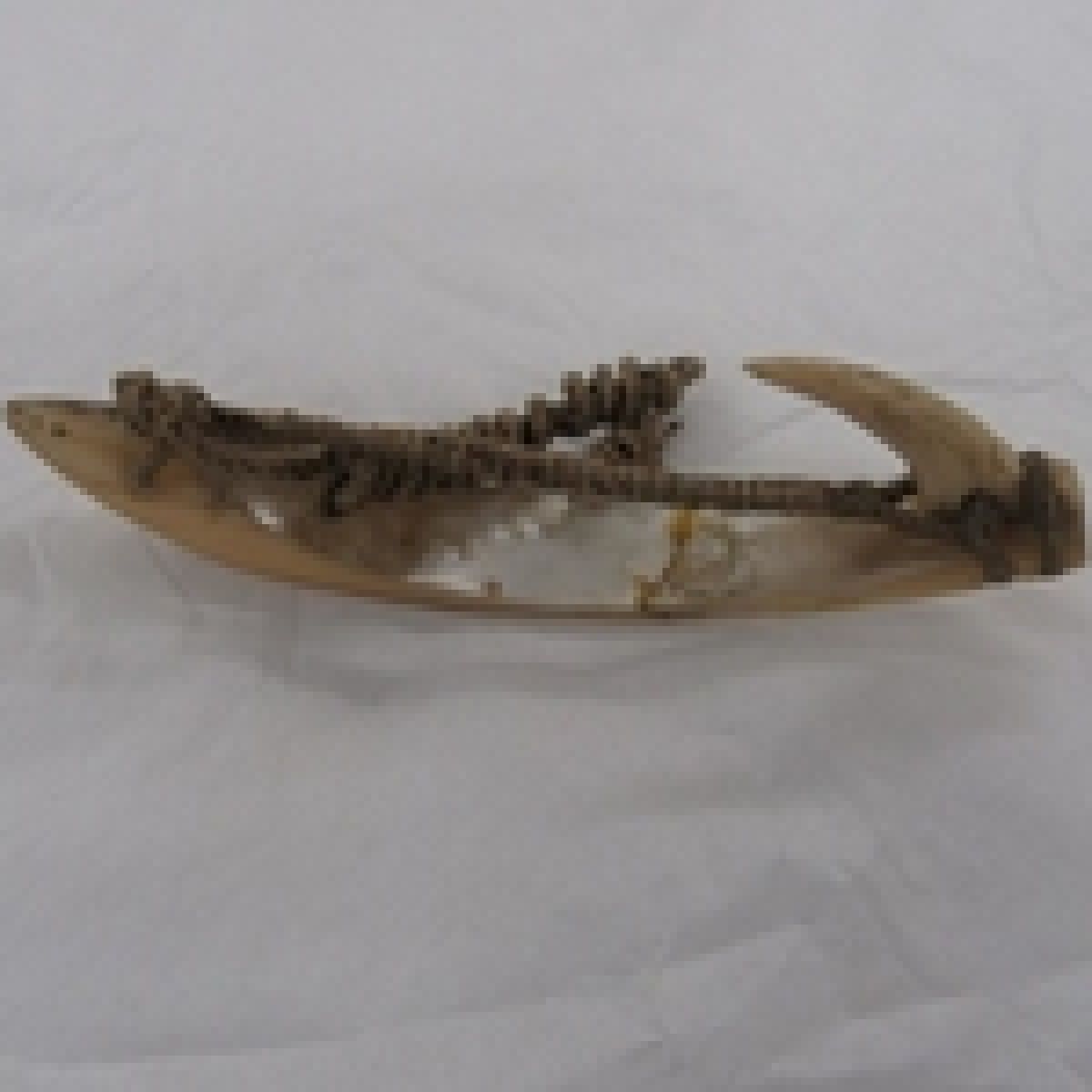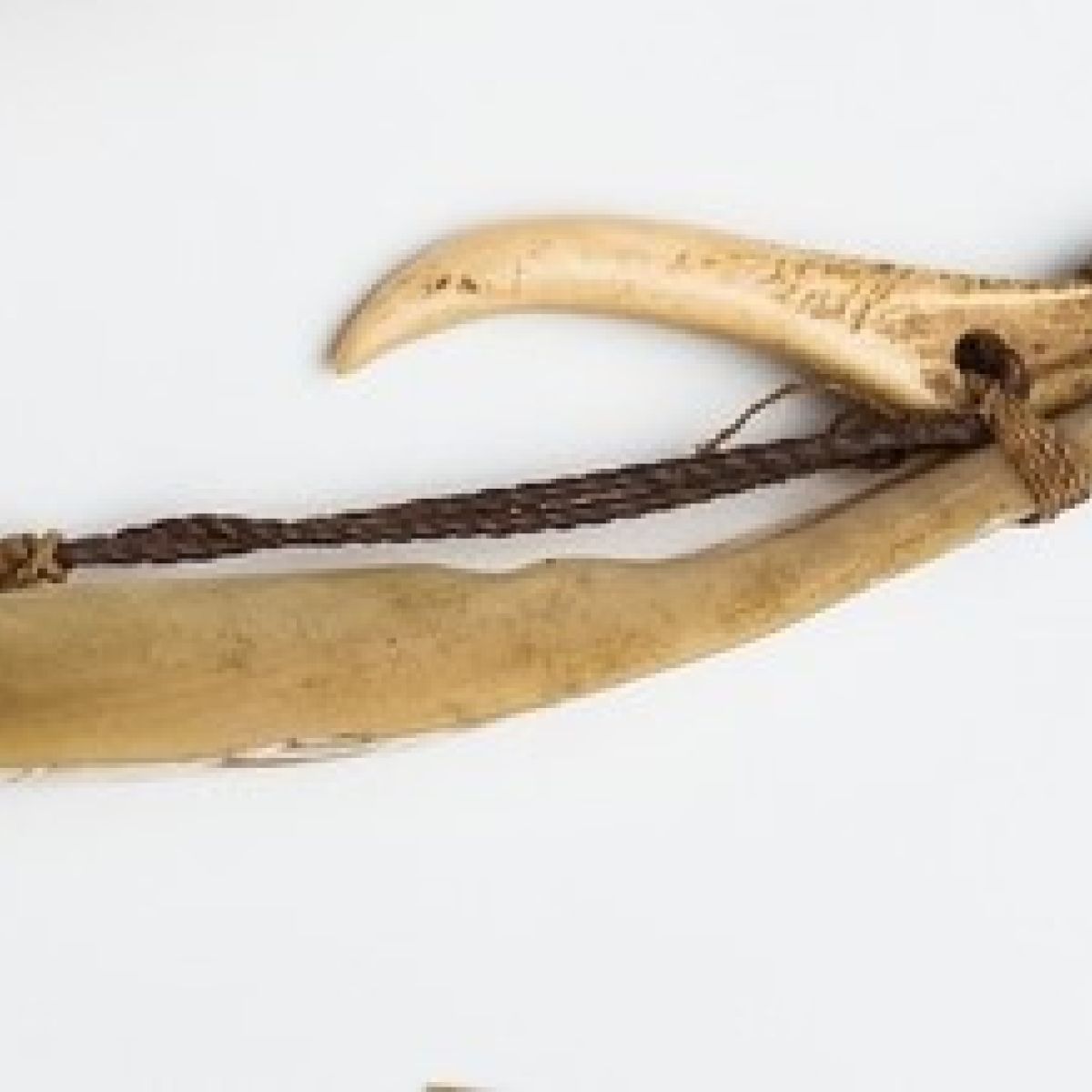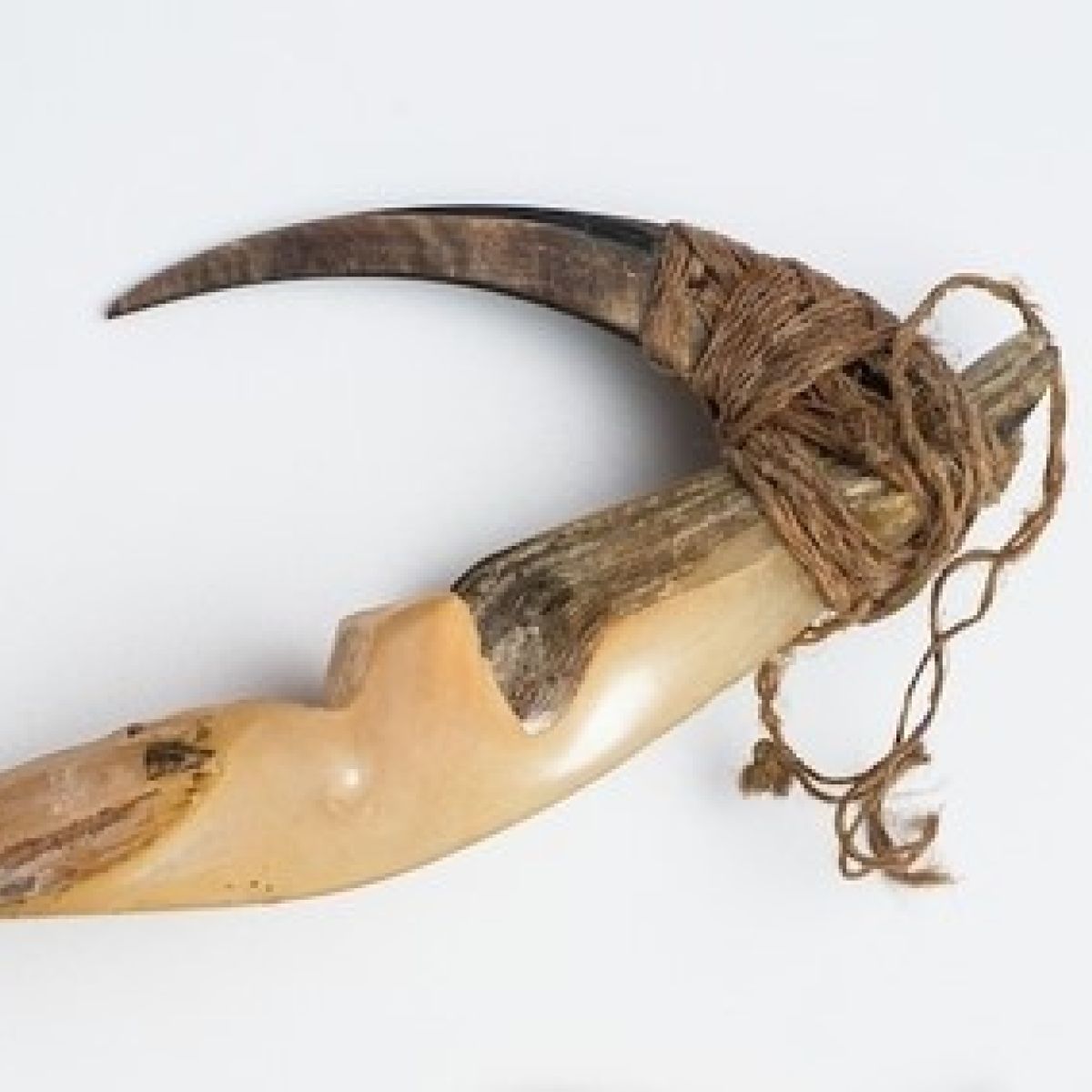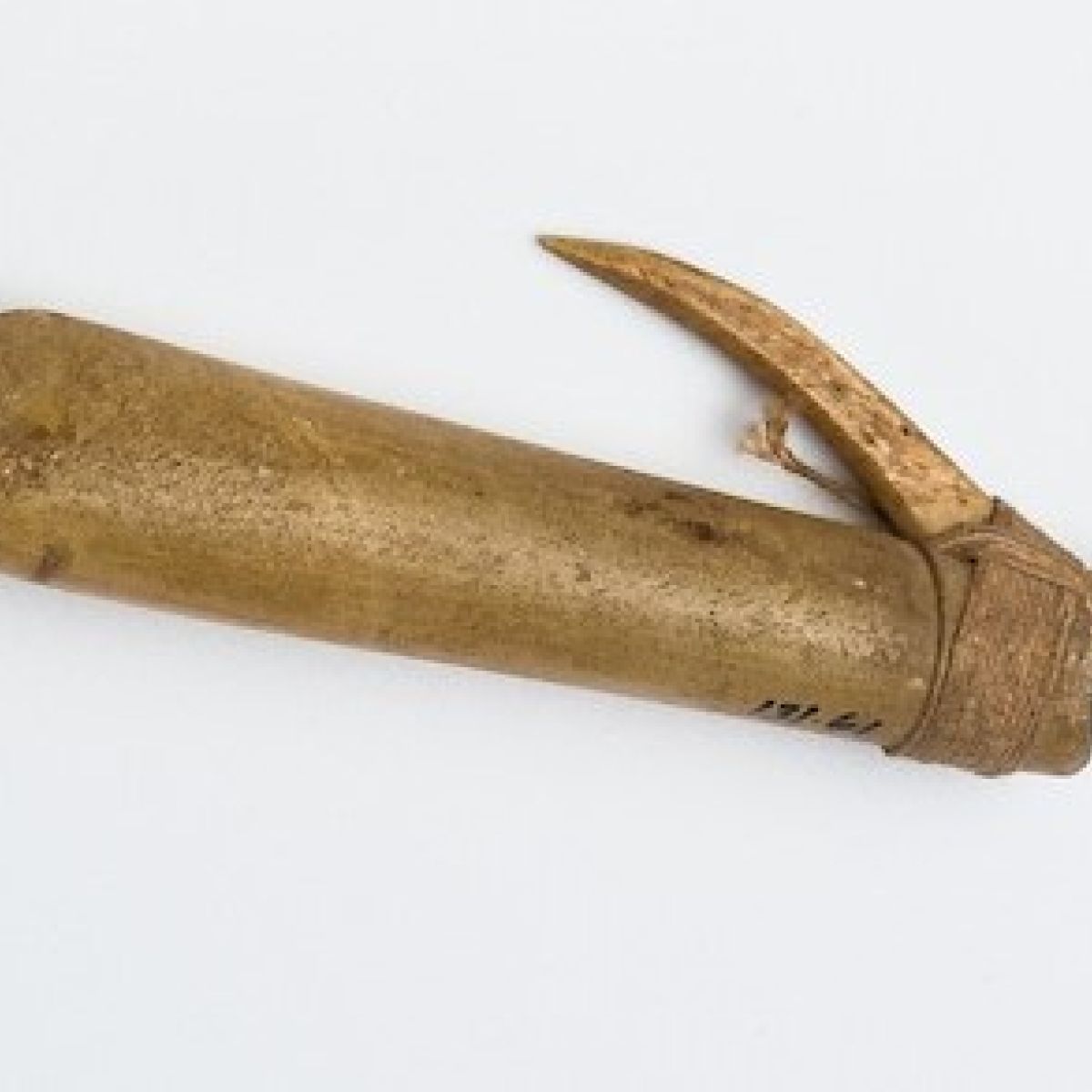4th May 2020
Hi! I’m Jocelyn, Research and Documentation Assistant, based at the Maritime Museum.
Normally I would be helping to document the Maritime Museum collection so that it is ready for the exciting Hull: Yorkshire’s Maritime City project. But instead I’m stuck at home!
Lockdown has been strange for all of us. I am missing being around all of the collections! But being in lockdown has given me lots of time to research interesting parts of the collection that we didn’t know very much about before.
I started with some of the objects that stand out the most from the collection.
First up is this:

There was little in the object record about this (and six others like it), and I wanted to change that!
The record currently reads “Hook/barb made of curved piece of mother of pearl, with 'MARSHALL' carved in. Mother of pearl barb bound to one end with string.”
Unfortunately it is unclear how our collection of fish hooks came to be in the Maritime Museum collection, so we don’t know where they came from or what communities made them.
Normally the ethnographic objects in our collection are from the Arctic. But this didn’t seem like it was – the use of mother of pearl pointed me towards Oceania!
To get started, I had a look at the Pitt Rivers Museum collections website. They have all sorts of ethnographic objects in their collections, so it seemed a sensible place to start! And sure enough, they had a similar looking hook, attributed to New Zealand / Kiribati.

From there, I had a look at the collections of the Museum of New Zealand Te Papa Tongarewa. They had an extensive collection of fish hooks, but they looked a little different to the one in our collection. So I searched around a bit, trying to find mother of pearl hooks in their collection. And they had some – trolling lures, called Pā Kahawai in Māori. The mother of pearl shank would have attracted the attention of fish.
Fun fact: Trolling is different to trawling, although both involve fishing from a moving boat – trawling is done with a net, and trolling is done with a fishing rod.

I was interested in how widespread the use of these hooked, mother of pearl lures was in Oceania, so I had a look at the British Museum website.

They had lures from the Soloman Islands. So now I knew that trolling lures like this were variously attributed to New Zealand, Kiribati, the Cook Islands, and the Soloman Islands. That covers a huge area – Melanesia, Micronesia AND Polynesia! Where were our lures from?
Well, a pretty major clue could be on the object itself. The object record for one of our lures says that it has the word ‘Marshall’ carved into it. The Marshall Islands are a group of islands in Micronesia, so that would certainly fit! An online search revealed an art auction website that was selling a fishing lure from the Marshall Islands. So (according to that website!) these types of lures can be found there.
The Museum of Archaeology and Anthropology luckily have hooks that looks a lot like our one labelled ‘Marshall’, from the Marshall Islands. The strange shape of the mother of pearl shank is pretty similar, even though some of theirs have extra fibre tufts attached to the top. (Shout out to fellow Research and Documentation Assistant Alice for suggesting the MAA website!)

So, from here, I headed over to our good friend Google Books, to try to get some well-researched evidence on lures! But unfortunately I was out of luck – no whole books about fishing lures of Oceania were forthcoming. The book “Fisheries in the Economy of the South Pacific” by Michael G. King (1991) only confirmed what I already knew – these types of lures are used all over Oceania. The differences between different lures are too subtle for me to identify without specialist help, so until I can get to a proper library, I think I’m out of luck!
So for now, it seems at least one of our lures is from the Marshall Islands, and the others are definitely from Oceania. If you know any more about these fascinating objects from our collection, do get in touch and give us some more information!

